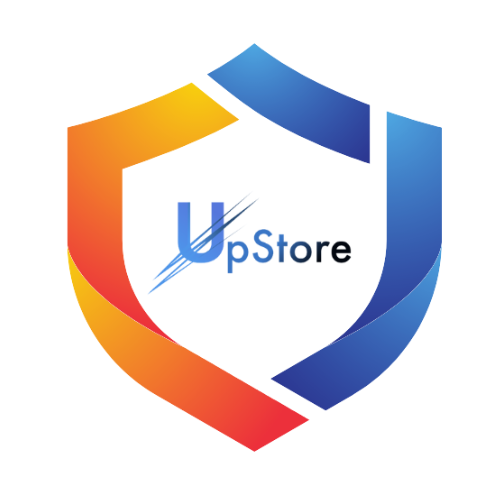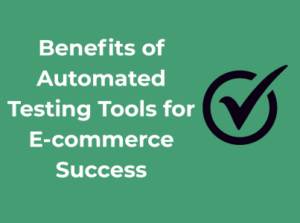The e-commerce industry is evolving at an unprecedented pace, driven by changing consumer expectations and rapid technological advancements.
Customers now demand flawless website performance, faster load times, and seamless checkout experiences across devices. Even minor bugs or slow updates can lead to abandoned carts and significant revenue loss along with huge demand for measures E-commerce accounting.
To stay competitive, businesses must ensure their platforms remain reliable and user-friendly at all times. Automated testing tools have emerged as a game-changer, enabling companies to accelerate testing cycles, reduce human errors, and maintain high-quality digital storefronts.
This article explores the key benefits of using automated testing tools in e-commerce and why they are essential for sustainable growth.
The Growing Complexity of E-commerce Testing

The e-commerce landscape has transformed into a highly dynamic and complex ecosystem. With customers accessing platforms through multiple devices, browsers, and payment options, businesses face significant challenges in delivering consistent user experiences.
Ensuring every transaction runs flawlessly under varying conditions is no longer optional, it’s a necessity for survival in this competitive market.
Increasing Multi-Device and Cross-Browser Demands
Modern consumers shop on desktops, tablets, and smartphones using a variety of browsers. Each combination can present unique challenges, making manual testing inefficient and error-prone.
Automated testing tools simplify this process by running parallel tests across different environments, ensuring compatibility and seamless performance for all users.
High Transaction Volumes and 24/7 Availability
E-commerce platforms often experience unpredictable traffic surges during sales events, product launches, or festive seasons.
Manual methods struggle to replicate high-load scenarios, leading to undetected bottlenecks. Automated load and stress testing ensure that systems can handle peak traffic without compromising speed or reliability.
Shorter Release Cycles and Frequent Updates
The shift toward agile development and continuous delivery requires frequent updates to features and fixes. Manually testing every release is impractical and time-consuming.
Automation enables rapid regression testing and supports continuous integration pipelines, ensuring faster rollouts without sacrificing quality.
Need for Robust Security and Compliance
Handling sensitive data such as payment information adds another layer of complexity.
Automated tools help validate security protocols and compliance with industry standards like PCI DSS, reducing the risk of data breaches and penalties.
Core Benefits of Automated Testing Tools for E-commerce
Automated testing tools have become an integral part of modern e-commerce development. They help teams release updates quickly, maintain high accuracy, and reduce costs while ensuring smooth user experiences. Below are the key benefits that make automation a necessity rather than an option.
Faster Release Cycles and Continuous Delivery

E-commerce platforms must frequently update product catalogs, add promotional features, and fix bugs without downtime.
Manual testing slows this process, making it difficult to keep pace with customer expectations. Automated testing speeds up regression and functional testing, allowing development teams to deliver updates faster.
When integrated into continuous integration and delivery pipelines, automated tests run automatically with every code change.
This ensures that new features or fixes are verified almost instantly, significantly reducing release times. Businesses can roll out improvements weekly or even daily, staying competitive in a rapidly evolving market.
Enhanced Accuracy and Reduced Human Errors
Manual testing relies heavily on the skills and attention of testers, which can result in overlooked bugs, especially during repetitive tasks.
Automated tools eliminate this inconsistency by running predefined scripts exactly the same way each time. This ensures accurate results for critical processes such as checkout flows, inventory updates, and payment gateways.
Automated testing in e-commerce also provides better coverage by simulating numerous scenarios, including edge cases that manual testers might miss.
This level of precision minimizes the risk of deploying faulty features that could frustrate customers or lead to lost sales.
Cost Efficiency and Scalability
While setting up automated testing requires initial investment in tools and script development, it pays off over time.
Once created, test scripts can be reused across multiple versions and environments, saving significant time and labor costs. This reusability is especially valuable for e-commerce businesses that frequently update products, pricing, and seasonal campaigns.
Automation also allows teams to scale their testing efforts effortlessly. During peak sales events, such as holidays, load tests can be executed on demand to ensure systems handle high traffic volumes without performance issues.
Improved User Experience and Customer Retention
Customer experience is at the core of e-commerce success. Even a minor glitch, such as a slow checkout page or broken search functionality, can drive users away.
Automated testing helps detect these issues early, enabling businesses to address them before they affect real customers.
By continuously validating features across multiple devices and browsers, automated tools ensure smooth navigation, fast page loading, and error-free transactions.
A consistently positive shopping experience leads to higher customer satisfaction, increased conversions, and improved retention rates over time.
Popular Automated Testing Tools Used in E-commerce
Automated testing tools cater to various e-commerce needs, from functional testing to load validation and cross-browser compatibility.
Among these, several stand out for their effectiveness and adaptability in fast-paced retail environments.
1. testRigor
testRigor is a no-code testing platform designed to simplify automated test creation and maintenance. It allows teams to write tests in plain English, reducing dependency on programming skills.
For e-commerce businesses, this means faster onboarding and collaboration between technical and non-technical teams. testRigor is especially useful for validating critical workflows such as checkout, payment processing, and product searches.
Its AI-driven approach also reduces script maintenance, making it ideal for platforms with frequent updates.
2. Selenium
Selenium is a widely used open-source framework for web application testing. It supports multiple programming languages, allowing testers to create flexible scripts for validating features like shopping carts and payment gateways.
Its compatibility with CI/CD pipelines makes it a reliable choice for regression and functional testing.
3. Cypress
Cypress is an end-to-end testing tool known for real-time reloading, easy debugging, and fast execution.
It is well-suited for testing dynamic features such as product filters or interactive carts, ensuring smooth customer experiences across browsers.
4. JMeter
Apache JMeter specializes in performance and load testing. It simulates high-traffic scenarios, helping e-commerce platforms prepare for peak sales events and avoid performance bottlenecks.
5. WebDriverIO
WebDriverIO, built on Node.js, simplifies browser and mobile testing. Its integration with tools like Appium and Sauce Labs makes it suitable for businesses that need seamless cross-platform validation.
Conclusion
Automated testing tools have become essential for e-commerce businesses striving to deliver smooth, reliable, and high-quality customer experiences.
They accelerate release cycles, improve accuracy, reduce costs, and support scalability, all of which are critical in a fast-paced online retail environment.
By integrating automation into their development and testing workflows, businesses can identify issues early, ensure consistent performance across devices, and maintain customer trust.
Adopting this approach positions e-commerce platforms to stay competitive, meet user expectations, and achieve sustainable growth in a constantly evolving digital market.






